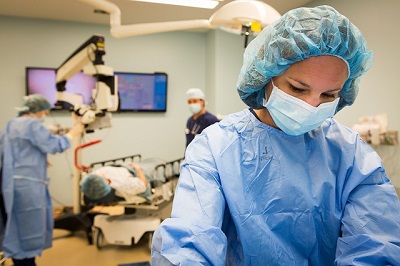Are You in The 4 Types That Need Hysterosalpingogram(HSG)?
It is known to all that 4 conditions are primary to get pregnant naturally:

1. The semen of the male is normal, and the sperm count, vitality, density, malformation rate and liquefaction time are all within the normal range.
2. The ovary of the female is normal, which means it can produce dominant follicles and ovulate without obstacles.
3. The channel-fallopian tube is unobstructed, it has no adhesion or blockage, no abnormal uplift, and its peristalsis is good.
4. The conditions of the "house" and "soil" meet the standard; that is, the shape of the uterine cavity is normal, and the endometrium has an appropriate thickness and good tolerance.
The first two are "seed" conditions, while the last two are for women.
The fallopian tube, also known as the "magpie bridge of sperm and egg", plays a very important role in the process of pregnancy because it functions to pick up eggs, transport sperm, eggs and fertilized eggs, and provide a place for fertilization. However, the fallopian tube is a long and thin tube susceptible to blockage. (The fallopian tube is 8-14 cm long, with an interstitial part of about 1 cm, an isthmus of 2-3 cm, a wider lumen of about 5-8 cm in the jugular part, and an umbrella part of about 1-1.5 cm.)
At present, the most accurate method to check whether the fallopian tube is blocked is a hysterosalpingogram(HSG), i.e., injecting contrast medium into the uterine cavity and fallopian tube through a catheter and conducting X-ray fluoroscopy and filming. This way, we can find out whether the fallopian tube is open and the uterine cavity's morphology according to the contrast medium's visualization and dispersion in the fallopian tube and the pelvic cavity.
Many patients wonder, "Should I have an HSG test"? In response to this question, we have listed 4 types of people prone to fallopian tube blockage and are recommended to undergo timely HSG tests. See if you are one of them.
1. Women who have been preparing for pregnancy for over a year but have not gotten pregnant. Medical Definition: If a couple has regular sex and no contraception but has not been pregnant for 1 year, infertility is diagnosed. You are considered infertile if you are older than 35 and have not been pregnant for 6 months. Among infertile women, 40% of the problems lie in the fallopian tubes.
2. Women who have a history of ectopic pregnancy. 95% of ectopic pregnancies are tubal pregnancies. When the fallopian tube is blocked by adhesion, the fertilized egg will "settle" inside the lumen of the tube. The blocked fallopian tube will even cause rupture if developing into a severe condition, which can be life-threatening. Therefore, when preparing for pregnancy again, it is necessary to check whether ectopic pregnancy is caused by tubal disease and whether there is a tubal blockage, adhesion, or fluid accumulation.
3. Women with a history of pelvic surgery. This includes abortion, history of appendicitis, history of tuberculosis, history of pelvic and abdominal surgery, and pelvic inflammatory disease. The organs in the pelvis are interrelated and interact with each other, and when inflammation spreads, it can cause tubal blockage and adhesion.
4. Women with a history of tubal ligation reversal. For those people, the function of the fallopian tubes should be evaluated again to check the operation's success.
In addition, patients must be reminded that HSG tests must be done at the right time, and the following should be kept in mind to avoid a wasted trip!
1. The test should be done within 3-7 days after the menstrual period is cleared, and if the period is irregular, the number of suitable days can be extended further as appropriate. Women with particularly irregular periods can do the test at any time, but the possibility of pregnancy needs to be ruled out.
2. Sexual intercourse is prohibited for 5 days before the test.
3. Empty the bladder before the test so that the position of the uterus is not affected by a full bladder.
4. A gynecological examination should be performed before the test to screen for inflammation of the reproductive tract so that the infection does not spread during the test.
5. Allergy test is required before using the contrast medium.
You may also be interested in:
Can You Be Pregnant After Fallopian Tube Dredging? Is there a Possibility of Recurrence?
Self-examine Whether the Fallopian Tubes Are Blocked: These Strategies Are Crucial
Is There No Chance of Pregnancy If the Fallopian Tube Is Blocked?
Beyond Ovulation: Does Normal Ovulation Guarantee Fallopian Tube Patency?
previous pageIs it Possible for Fallopian Tubes to be Blocked without One's Knowledge?
next page- Is Fallopian Tube Blockage Causing Your Lower Abdominal Pain?
- Hydrosalpinx and IVF: What Are the Chances of Successful Embryo Implantation?
- Resistance During Fallopian Tube Examination May Indicate Mild Blockage
- What Should Patients with Fallopian Tube Blockage Pay Attention to in Their Daily Life?
- Mild Fallopian Tube Blockage: Exercise and Heat Therapy as Adjunct Treatments
Testimonials
- Adenomyosis with Ureaplasma Urealyticum Cured by Fuyan Pill
- Tubal blockage with hydrosalpinx can be cured by TCM shortly
- Fuyan Pill Helps A woman with Adenomyosis Get Pregnant
- A Woman with Hydrosalpinx Is Cured with Fuyan pill
- Pelvic Inflammatory Disease Testimonials
- Irregular Vaginal Bleeding and Endometrial Thickening Cured by Fuyan Pill
- Pruritus Vulvae and Frequent Urination: Mycoplasma Infection Cured after 2 Courses



